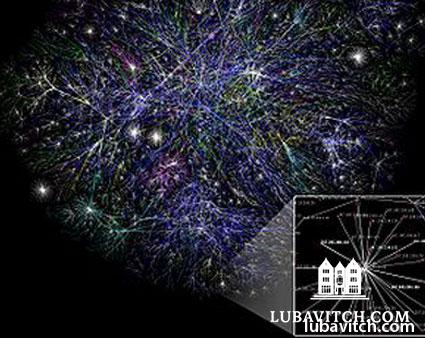(lubavitch.com) With the arrival of the new first family and the 44th president of the United States into the White House last month, came a new email system. Also gaining residence at 1600 Pennsylvania Avenue was President Obama’s souped-up PDA.
Like our new president, many Chabad-Lubavitch representatives (shluchim) are finding that technology is an inseparable part of modern life. And though they may not be carrying the world’s only NSA-secured smartphone on their hips, shluchim are using assorted Web 2.0 applications to get their own executive missions accomplished.
“If any group would embrace this technology, it would have to be Lubavitch,” asserts Noam Cohen, a technology writer for the New York Times. Cohen discovered Chabad Lubavitch’s presence on the social networking site, Twitter, when official news organizations drew a blank in coverage during the Mumbai massacres last November.
Mordechai Lightstone, a writer for Lubavitch.com, updates Twitter with regular tweets (instantaneous messages of up to 140 characters). “I was surprised to see Twitter being used in such a sharp way,” recalls Cohen. “They played it to its strength and were able to inform people of the goings-on.”
“For better or worse,” Cohen continues, “people today want to be in constant touch. Sites like Twitter and Facebook are the way of the future.”
On college campuses around the globe, they are also very much the way of the present.
Rabbi Mendel and Brocha Lent moved to Nottingham, England last August and both credit the internet with their budding success on the Universities of Nottingham and Derby campuses. “Students’ lives literally revolve around Facebook,” says Mrs. Lent, “so we reach out to them through this medium. Many students think that we’re here to convert them, and are too nervous to come by. After we develop a friendship with them, through chatting on Facebook, they are willing to check us out.”
In Venezuela, Rabbi Yosef Chaim Slavin says that of his ten years serving the downtown Jewish community of Caracas, this past was his most successful. The credit, he says, goes to a three-minute JabadTube presentation which he has prepared each week since December of 2007.
The audio-visual presentation explaining the week’s Torah portion takes approximately 30 hours per week to produce. Together with his wife and a professional editor, Slavin finds subject matter, writes and translates his speech into Spanish, locates appropriate graphics, and films the presentation.
Slavin estimates that 1,000 people view his short clip each week, via YouTube, his own website, and through email. “People who I have never met before thank me for the show…and ask when the next one is coming out.” Slavin ends each video by saying, “Chassidut explica” (Chassidut explains) and leaves his viewers with a parting message of inspiration. “Often when I am walking through the streets of Caracas,” he chuckles, “people will beep their car horns and shout, ‘Chassidut explica!’”
“The broadcast,” says Slavin, “allows me to get into people’s homes and offices. I know of many couples who watch the show on their laptops before bed.”
“Not everyone is available, emotionally or otherwise, to come to the synagogue on Shabbat to pray and listen to the rabbi’s speech,” explains Rabbi Mendy Herson of Basking Ridge, New Jersey. “I feel that the words I say from behind the pulpit are directed to a more select group. My blog provides an avenue to reach people who do not want to attend shul regularly, but do want a connection.”
Herson began his blog in August of 2007 when community members begged him to record his experiences visiting sites of historic and religious significance in Russia.
Though Herson directs his “quick capsules of inspiration” towards community members, some of his 300 regular readers hail from across the United States, Australia, and France. “My writing has taken on a certain style. I know that I have to keep it short. People are accessing it in their offices and there is not enough space in the brain to process a long speech. My goal is to flip into the tiny crack of consciousness that is open.”
Approximately 900,000 blog posts are created daily around the world with over six billion people using the internet on a regular basis. The thousands of Chabad representatives who utilize this important tool, are quick to point out that the internet is merely a springboard for personal, meaningful connection. “People read my posts and then bring discussion points or questions to the synagogue and the street,” states Herson. “I didn’t realize what a tremendous (and undervalued) tool we have available.”
Chabad has been at the forefront of viral marketing even before the internet was created, and was one of the first to use the web with the creation of chabad.org, our Torah content and children's content website, and then askmoses.com, a live chat website.
But with its inception, Torah podcasts, Youtube videos illustrating how to wrap Tefillin, and Shabbat invitations via Facebook, are the contemporary facade of this traditional movement. Wherever you find Google, there too is Chabad.

Be the first to write a comment.